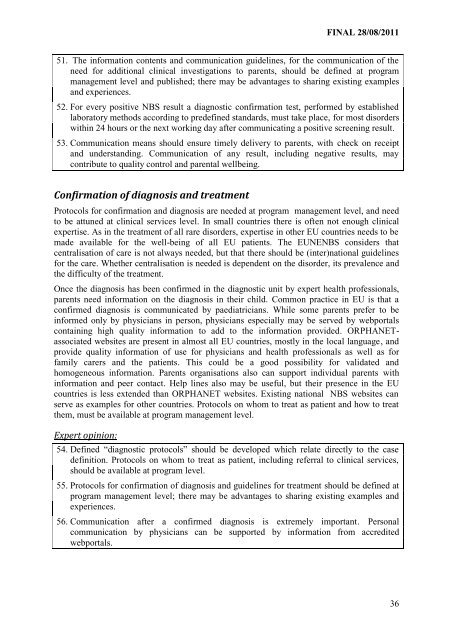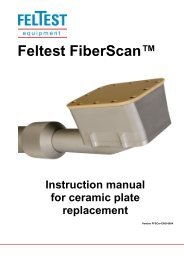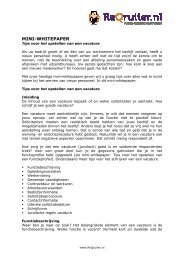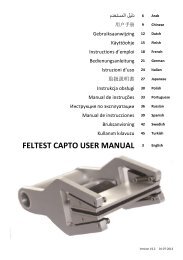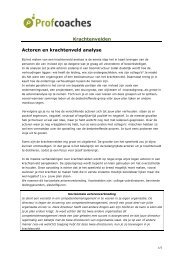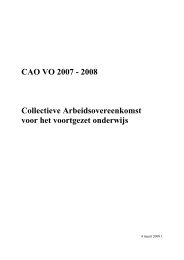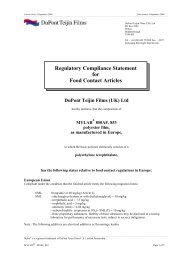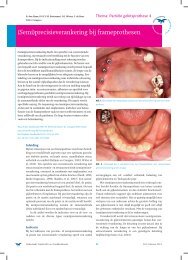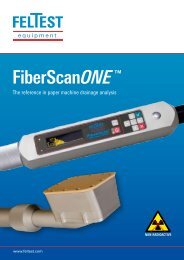FINAL 28/08/201151. The <strong>in</strong>formation contents and communication guidel<strong>in</strong>es, for the communication of theneed for additional cl<strong>in</strong>ical <strong>in</strong>vestigations to parents, should be def<strong>in</strong>ed at programmanagement level and published; there may be advantages to shar<strong>in</strong>g exist<strong>in</strong>g examplesand experiences.52. For every positive NBS result a diagnostic confirmation test, performed by establishedlaboratory methods accord<strong>in</strong>g to predef<strong>in</strong>ed standards, must take place, for most disorderswith<strong>in</strong> 24 hours or the next work<strong>in</strong>g day after communicat<strong>in</strong>g a positive <strong>screen<strong>in</strong>g</strong> result.53. Communication means should ensure timely delivery to parents, with check on receiptand understand<strong>in</strong>g. Communication of any result, <strong>in</strong>clud<strong>in</strong>g negative results, maycontribute to quality control and parental wellbe<strong>in</strong>g.Confirmation of diagnosis and treatmentProtocols for confirmation and diagnosis are needed at program management level, and needto be attuned at cl<strong>in</strong>ical services level. In small countries there is often not enough cl<strong>in</strong>icalexpertise. As <strong>in</strong> the treatment of all rare disorders, expertise <strong>in</strong> other EU countries needs to bemade available for the well-be<strong>in</strong>g of all EU patients. The EUNENBS considers thatcentralisation of care is not always needed, but that there should be (<strong>in</strong>ter)national guidel<strong>in</strong>esfor the care. Whether centralisation is needed is dependent on the disorder, its prevalence andthe difficulty of the treatment.Once the diagnosis has been confirmed <strong>in</strong> the diagnostic unit by expert health professionals,parents need <strong>in</strong>formation on the diagnosis <strong>in</strong> their child. Common practice <strong>in</strong> EU is that aconfirmed diagnosis is communicated by paediatricians. While some parents prefer to be<strong>in</strong>formed only by physicians <strong>in</strong> person, physicians especially may be served by webportalsconta<strong>in</strong><strong>in</strong>g high quality <strong>in</strong>formation to add to the <strong>in</strong>formation provided. ORPHANETassociatedwebsites are present <strong>in</strong> almost all EU countries, mostly <strong>in</strong> the local language, andprovide quality <strong>in</strong>formation of use for physicians and health professionals as well as forfamily carers and the patients. This could be a good possibility for validated andhomogeneous <strong>in</strong>formation. Parents organisations also can support <strong>in</strong>dividual parents with<strong>in</strong>formation and peer contact. Help l<strong>in</strong>es also may be useful, but their presence <strong>in</strong> the EUcountries is less extended than ORPHANET websites. Exist<strong>in</strong>g national NBS websites canserve as examples for other countries. Protocols on whom to treat as patient and how to treatthem, must be available at program management level.<strong>Expert</strong> op<strong>in</strong>ion:54. Def<strong>in</strong>ed “diagnostic protocols” should be developed which relate directly to the casedef<strong>in</strong>ition. Protocols on whom to treat as patient, <strong>in</strong>clud<strong>in</strong>g referral to cl<strong>in</strong>ical services,should be available at program level.55. Protocols for confirmation of diagnosis and guidel<strong>in</strong>es for treatment should be def<strong>in</strong>ed atprogram management level; there may be advantages to shar<strong>in</strong>g exist<strong>in</strong>g examples andexperiences.56. Communication after a confirmed diagnosis is extremely important. Personalcommunication by physicians can be supported by <strong>in</strong>formation from accreditedwebportals.36
FINAL 28/08/2011Communication of un<strong>in</strong>tended f<strong>in</strong>d<strong>in</strong>gsNBS will generate <strong>in</strong>tended and un<strong>in</strong>tended f<strong>in</strong>d<strong>in</strong>gs. Sometimes other conditions arediagnosed, such as thalassemias when look<strong>in</strong>g for sickle cell disease with HPLC. The benefitsof early diagnosis are less clear. As thalassemia is a treatable childhood condition, this is not aserious problem. On some occasions <strong>in</strong>fants may have metabolic symptoms due to a maternalmetabolic condition. Parents should be given the possibility to be <strong>in</strong>formed of any relevantun<strong>in</strong>tended f<strong>in</strong>d<strong>in</strong>g <strong>in</strong> their <strong>in</strong>fant, <strong>in</strong>clud<strong>in</strong>g carrier status, 67 unless forbidden by law. 68 If the<strong>in</strong>fant is a carrier, at least one of the parents is a carrier too, and the risk of hav<strong>in</strong>g a child witha serious condition is <strong>in</strong>creased. Therefore the <strong>in</strong>formation on carrier status of the child isrelevant to the parents. The EUNENBS considers that un<strong>in</strong>tended f<strong>in</strong>d<strong>in</strong>gs that could berelevant to the parents always should be communicated. It acknowledges however that itmight not always be straightforward to def<strong>in</strong>e whether a result is relevant. Communicationplans on positive results must be developed at program management level for consistencyreasons. F<strong>in</strong>d<strong>in</strong>gs for which the assessment concluded for an unfavourable balance of risksand benefits, should not be communicated. 69 Information which is not necessary withreference to timely and effective benefit, should not be communicated and should bedestroyed.<strong>Expert</strong> op<strong>in</strong>ion:57. Parents should be given the possibility to be <strong>in</strong>formed of any un<strong>in</strong>tended f<strong>in</strong>d<strong>in</strong>g thatcould be relevant, to the extent this is consistent with laws, <strong>in</strong>dividual data protectionrights and the right to privacy.58. Different positions have been taken <strong>in</strong> the debate on un<strong>in</strong>tended f<strong>in</strong>d<strong>in</strong>gs. Discussion isneeded <strong>in</strong> countries to develop policy, and legislation if appropriate. This should bepublished.59. As far as un<strong>in</strong>tended but relevant <strong>in</strong>formation for the health of the child or mother isconcerned, parents should be given the possibility to be <strong>in</strong>formed. For the return of<strong>in</strong>formation on carrier status a separate decision, consistent with other relevant nationalhealth regulations, is needed <strong>in</strong> each country. This is because carrier <strong>in</strong>formation isma<strong>in</strong>ly important for reproductive choice of the parents and not directly for the health ofthe screened newborn. The content of the <strong>in</strong>formation and guidel<strong>in</strong>es for itscommunication to parents should be def<strong>in</strong>ed at program management level; it may takeadvantage from shar<strong>in</strong>g exist<strong>in</strong>g examples and experiences.67 <strong>Europe</strong>an Society of Human Genetics. Genetic test<strong>in</strong>g <strong>in</strong> asymptomatic m<strong>in</strong>ors: Recommendations of the<strong>Europe</strong>an Society of Human Genetics. Eur J Hum Genet. 2009;17:720-1.Burton H, Moorthie S. Expanded newborn <strong>screen<strong>in</strong>g</strong>. A review of the evidence. Cambridge, PHG foundation,2010.Bombard Y, Miller FA, Hayeems RZ, Avard D, Knoppers BM, Cornel MC, Borry P. The expansion of newborn<strong>screen<strong>in</strong>g</strong>: is reproductive benefit an appropriate pursuit? Nat Rev Genet. 2009;10:666-7.Borry P, Nys H, Dierickx K. Carrier test<strong>in</strong>g <strong>in</strong> m<strong>in</strong>ors: conflict<strong>in</strong>g views. Nat Rev Genet. 2007;8(11):828.68 In Germany on February 1 st , 2010 the “GendiagnostikGesetz” (Genetic test<strong>in</strong>g law) came <strong>in</strong>to force, protect<strong>in</strong>gthe right-not-to-know <strong>in</strong>cidental f<strong>in</strong>d<strong>in</strong>gs. http://www.gesetze-im-<strong>in</strong>ternet.de/bundesrecht/gendg/gesamt.pdf69Council of <strong>Europe</strong> Additional Protocol to the Convention on Human Rights and Biomedic<strong>in</strong>e, concern<strong>in</strong>gGenetic Test<strong>in</strong>g for Health Purposes , art 16, items 2, 3, 437


